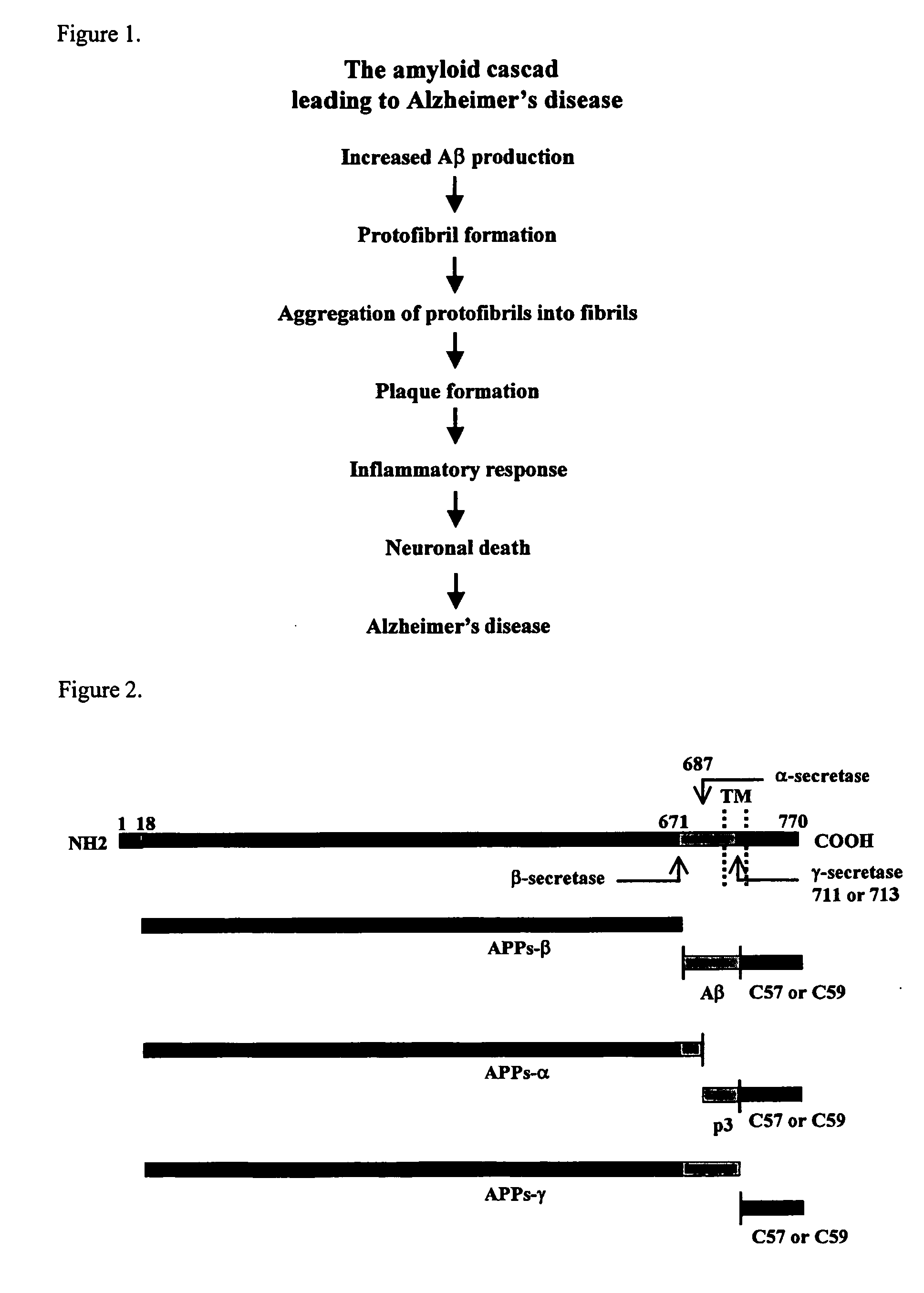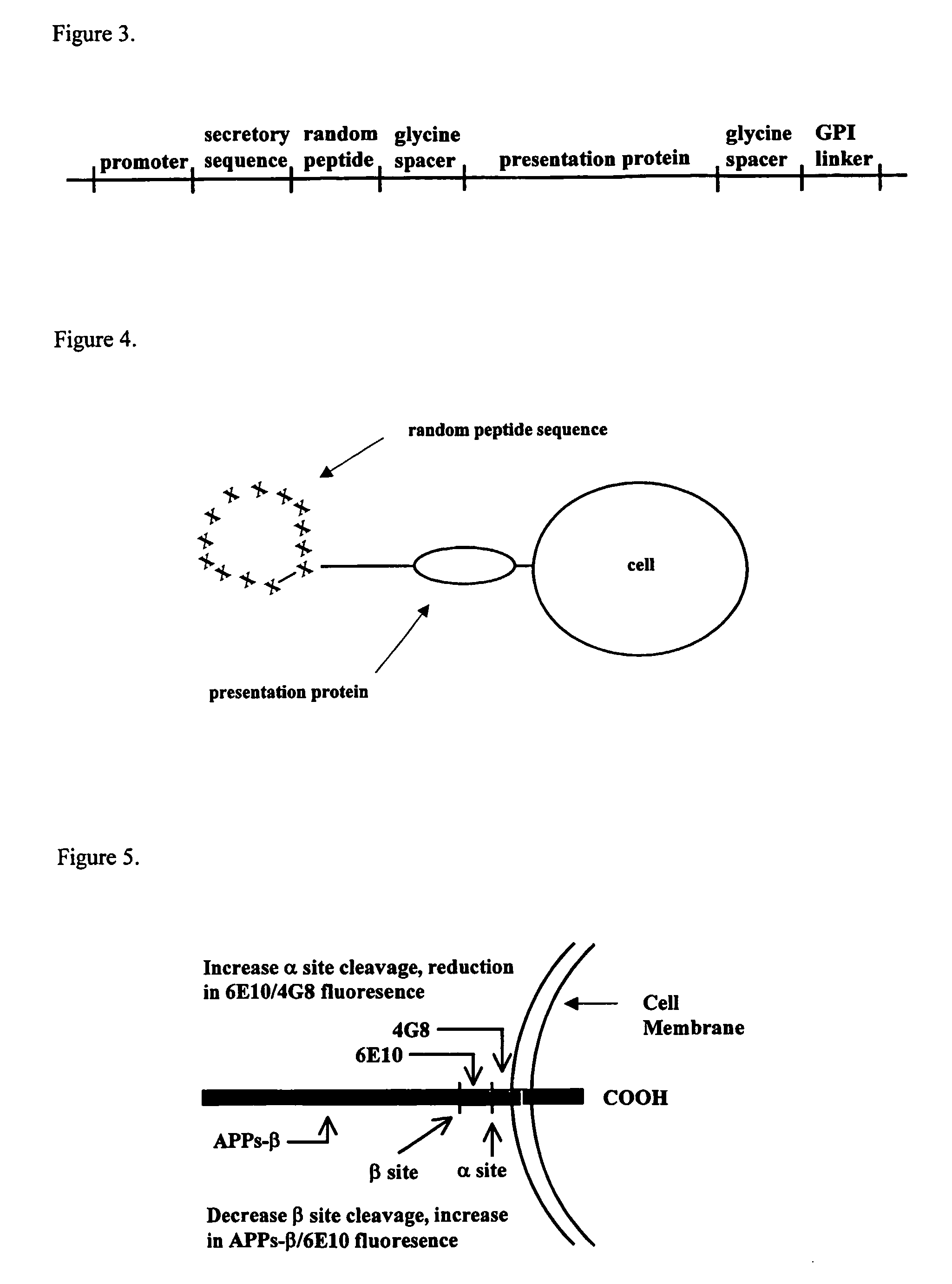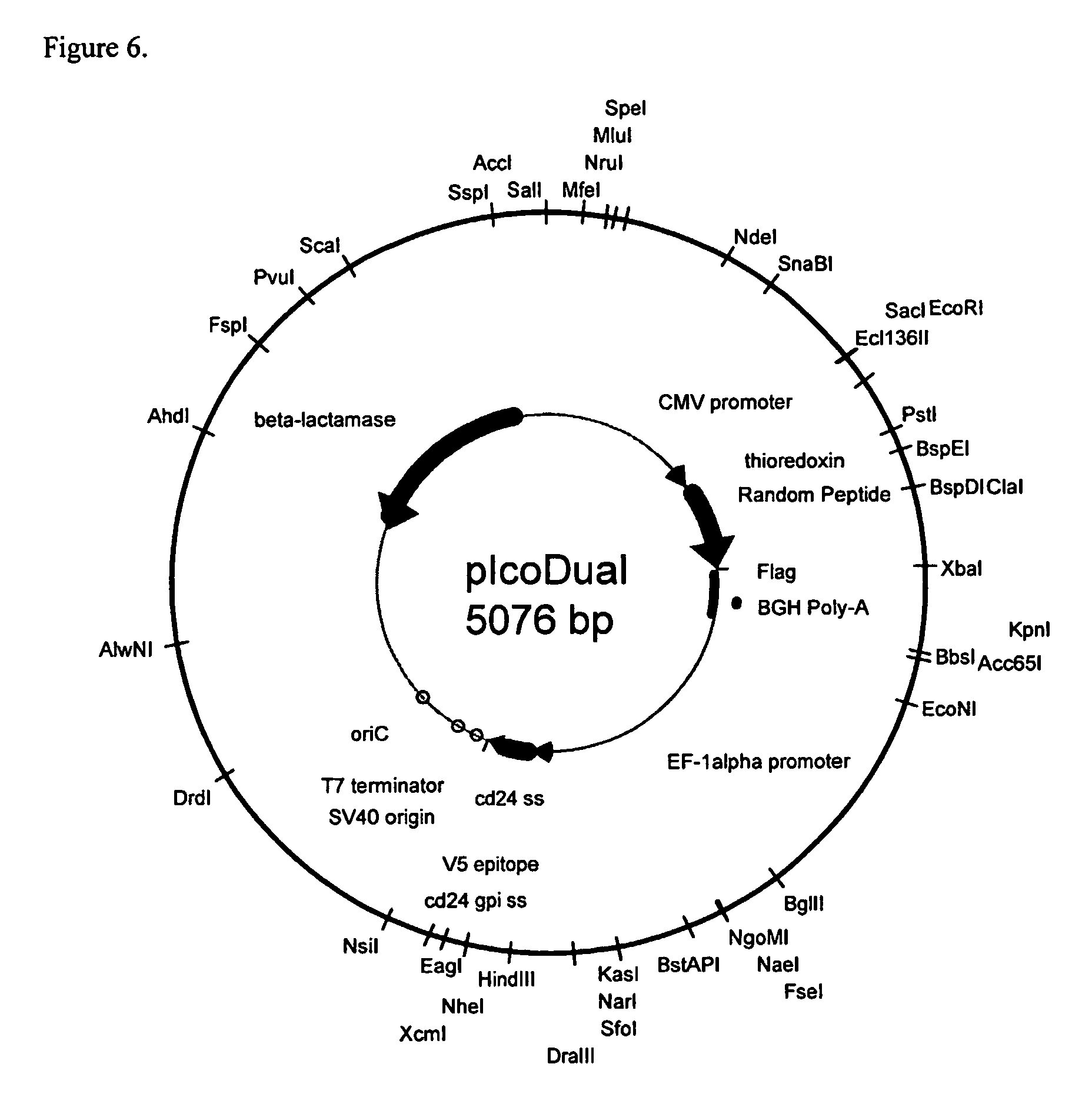Methods for the identification of agents that modulate the structure and processing of beta-amyloid precursor protein
a beta-amyloid precursor and protein technology, applied in the field of neuropathology of alzheimer's disease, can solve the problems of inability unable to identify peptide effectors, and unable to achieve the identification of peptide effectors, and achieve the effect of high copy number
- Summary
- Abstract
- Description
- Claims
- Application Information
AI Technical Summary
Benefits of technology
Problems solved by technology
Method used
Image
Examples
example 1
Preparation of a Genetic Library in a Host Cell
[0160] A genetic library is prepared by inserting random oligonucleotides into a cloning site of an expression vector. The expression vector has an expression cassette comprising, in a 5′ direction relative to the direction of transcription, a promoter, a nucleic acid encoding a signal sequence, a nucleic acid encoding a presentation molecule, a cloning site located at the 5′ end of the nucleic acid encoding the presentation molecule, a nucleic acid encoding a transmembrane domain, and a transcription terminator. The expression vector includes an origin of replication (ColE1) and an antibiotic resistance marker for selection in E. coli. The random oligonucleotides encode peptides of about 7 to about 20 amino acid residues. The vectors containing the oligonucleotides are transformed into host bacteria and grown under selectable conditions to establish a library of about 10 million to several billion independent isolates. Vector DNA is p...
example 2
Engineering the Random Peptide Vector for the Expression of APP Effectors
[0161] The preferred random peptide vector for the expression of APP effectors is a retroviral vector with the cassette insert shown in the FIG. 3. The cassette encodes a promoter; a secretory sequence to cause the protein to enter the secretory pathway; a random peptide sequence encoding cysteines at the termini of the random sequence to cause disulfide bridge formation lending structure to the random amino acid sequence; a glycine spacer; a presentation protein; a second glycine spacer to impart flexibility at the cell surface; and a GPI linker sequence that causes the fusion protein to be tethered to the cell surface. The presentation protein is a globular inert protein on which the random peptide sequence is tethered and displayed. This configuration allows the peptide ring of random amino acids to be tethered at the end of a string of glycines providing flexibility. The glycine spacer between the cell and...
example 3
Expression Vector Construction
[0162] To achieve high expression levels of library peptides on the surface of host cells, an expression vector is used. The expression vector includes markers required for propagation and selection in bacteria, an expression cassette including a mammalian cell transcription promoter (e.g., the cytomegalovirus or EF-1α promoter, and the like), a nucleic acid encoding a presentation molecule and a transcription terminator. Random library sequences can be inserted at the N-terminus, at the C-terminus, or internally in the nucleic acid encoding the presentation molecule and can be in a linear or constrained loop array or in an exposed loop of the presentation molecule.
[0163] To attach the presentation molecule to the surface of host cells, the nucleic acid encoding the presentation molecule includes a sequence encoding a secretory signal sequence and an element to tether the fusion protein to the cell surface (e.g., a signal for glycophosphatidylinositol...
PUM
| Property | Measurement | Unit |
|---|---|---|
| temperature | aaaaa | aaaaa |
| amyloid β-protein | aaaaa | aaaaa |
| length | aaaaa | aaaaa |
Abstract
Description
Claims
Application Information
 Login to View More
Login to View More - R&D
- Intellectual Property
- Life Sciences
- Materials
- Tech Scout
- Unparalleled Data Quality
- Higher Quality Content
- 60% Fewer Hallucinations
Browse by: Latest US Patents, China's latest patents, Technical Efficacy Thesaurus, Application Domain, Technology Topic, Popular Technical Reports.
© 2025 PatSnap. All rights reserved.Legal|Privacy policy|Modern Slavery Act Transparency Statement|Sitemap|About US| Contact US: help@patsnap.com



